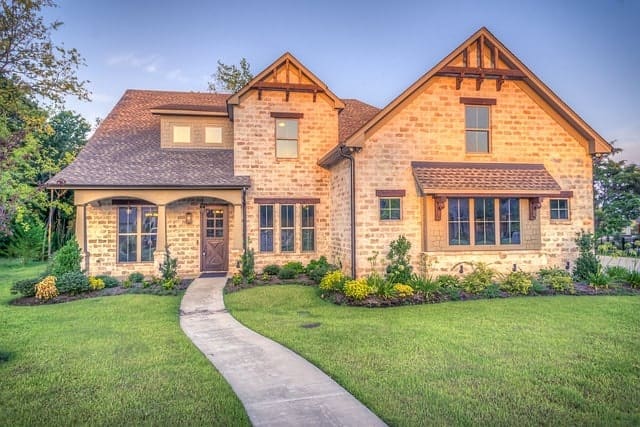Selecting the right materials for your home’s exterior is crucial, as it not only impacts its aesthetic appeal but also its durability and maintenance requirements. From siding to roofing, each component plays a significant role in enhancing both the functionality and curb appeal of your home. With an array of options available in the market, making the right choice can be overwhelming. However, by considering several key factors, you can ensure that your home’s exterior materials meet your specific needs and preferences.
Durability and Longevity
Durability and longevity are crucial considerations when selecting exterior materials for any construction project. The lifespan of materials varies significantly, influencing maintenance schedules and overall costs. For instance, vinyl siding stands out for its exceptional durability and minimal maintenance demands, boasting a lifespan of 30 years or more when properly cared for. This longevity makes it a popular choice for homeowners seeking enduring solutions for their exteriors. To learn more, explore reputable sources that can offer valuable insights into the enduring nature of vinyl siding, empowering individuals with knowledge to make informed decisions about their construction materials. Moreover, gaining insight from experts in the field can offer additional guidance and clarity, ensuring that the choice of vinyl siding aligns with both practical needs and long-term goals for the exterior of a building.
Alongside vinyl, options such as exterior wall stone veneer from Canada or elsewhere offer a different set of advantages, particularly in terms of texture, aesthetic appeal, and resistance to weather extremes. While vinyl is lightweight and easy to maintain, these stones provide a more natural, upscale appearance and stand up well in colder climates. Both materials are valued for their longevity, but the choice often depends on whether the priority is low maintenance or a more visually striking finish.
Climate Compatibility
The climate in which you live greatly influences the performance of exterior materials. For instance, regions prone to high humidity or extreme temperature fluctuations may require materials that are resistant to moisture damage and thermal expansion. Conversely, areas with heavy precipitation or frequent storms may benefit from durable materials that can withstand harsh weather conditions without deteriorating. Understanding your local climate conditions can help you choose materials that will withstand the test of time and minimize the need for repairs or replacements.
Aesthetic Appeal
The exterior of your home serves as its visual identity, making the aesthetic appeal of the chosen materials a crucial consideration. Whether you prefer a traditional, modern, or eclectic look, selecting materials that complement your home’s architectural style and design vision is essential. Additionally, factors such as color, texture, and finish play a significant role in enhancing the overall curb appeal of your home. By carefully evaluating various options and envisioning how they will blend with your home’s surroundings, you can create a cohesive and visually pleasing exterior.
Maintenance Requirements
Another important factor to consider is the maintenance requirements of the chosen materials. While some materials may only need periodic cleaning or occasional touch-ups, others may demand more extensive upkeep, such as regular sealing or repainting. Assessing your willingness and ability to invest time and effort into maintaining your home’s exterior can help you choose materials that align with your lifestyle and preferences. Additionally, opting for low-maintenance materials can save you both time and money in the long run, reducing the need for frequent repairs and replacements.
Cost-effectiveness
Cost is often a significant consideration when selecting exterior materials for your home. While some materials may have a higher upfront cost, they may prove to be more cost-effective in the long term due to their durability and low maintenance requirements. On the other hand, cheaper options may require more frequent repairs or replacements, ultimately costing you more over time. It’s essential to weigh the initial investment against the long-term benefits and consider factors such as energy efficiency and potential resale value when making your decision.
Energy Efficiency
In an age of increasing environmental awareness, energy efficiency has become a crucial consideration for homeowners. Choosing materials that help improve the energy efficiency of your home can lead to significant cost savings on utility bills and reduce your carbon footprint. For example, opting for insulated siding or roofing materials can enhance your home’s thermal performance, reducing heat loss in the winter and heat gain in the summer. Additionally, selecting materials with high solar reflectance and emissivity can help mitigate the urban heat island effect, contributing to a more sustainable and comfortable living environment.
Environmental Impact
Last but not least, it’s essential to consider the environmental impact of the materials you choose for your home’s exterior. Look for sustainable options made from renewable or recycled materials that have minimal adverse effects on the environment. Additionally, consider the manufacturing process, transportation emissions, and end-of-life disposal options associated with each material. By prioritizing eco-friendly materials and practices, you can minimize your ecological footprint and contribute to a healthier planet for future generations.

Choosing the right materials for your home’s exterior is a decision that requires careful consideration of various factors, including durability, climate compatibility, aesthetic appeal, maintenance requirements, cost-effectiveness, energy efficiency, and environmental impact. By thoroughly assessing your needs and priorities, researching available options, and consulting with professionals, you can make informed decisions that will enhance the beauty, functionality, and sustainability of your home for years to come.


